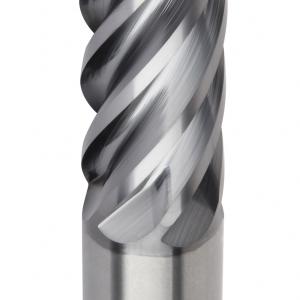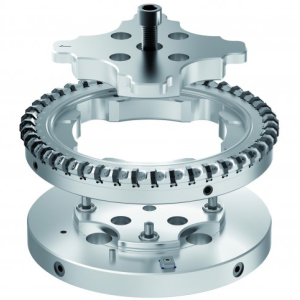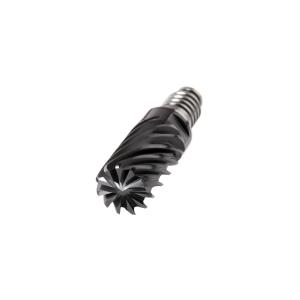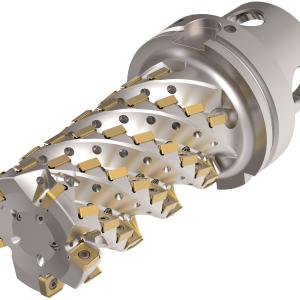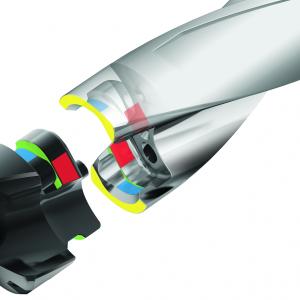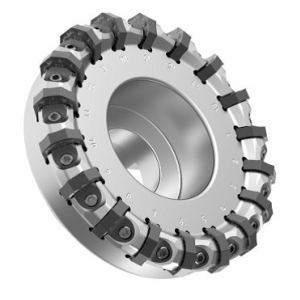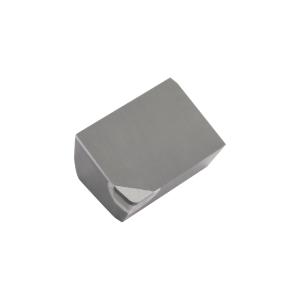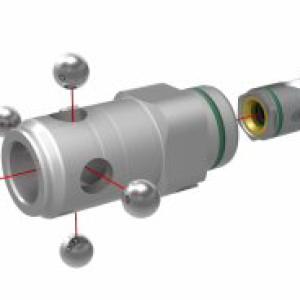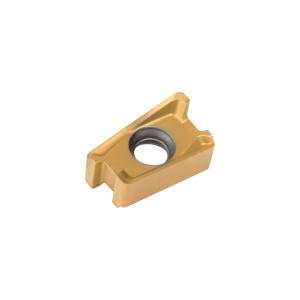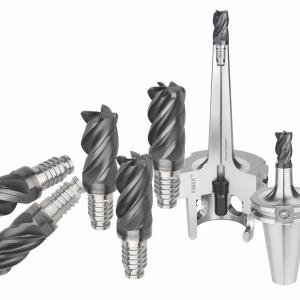Contact Details
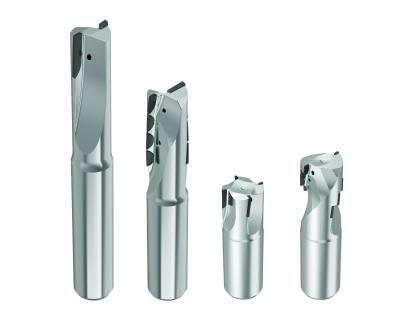
Kennametal has introduced a new line of PCD round tools for aluminum machining that delivers up to 10 times higher productivity than carbide tooling. The new line of drills, reamers and end mills provides exceptional tool life and wear resistance even in very abrasive aluminum alloys and are available with very short lead times.
A broad selection of PCD end mills in diameters up to 50 mm are available as standard.
“Our new PCD round tools line enables our customers to machine aluminum significantly faster, for greater productivity on the shop floor,” says Michael Hacker, Product Manager, Kennametal. “In drilling and reaming operations, these tools consistently perform at cutting speeds of up to 900 m/min (3,000 SFM). Milling operations can be performed at an incredible 6.000 m/min (20,000
Kennametal Inc. · 525 William Penn Place · Suite 3300 · Pittsburgh, PA · 15219, USA Contact: carsten.gromoll@kennametal.com · (+1) 724 539 8033SFM)—far higher than non-PCD tooling.”
Long tool life, high productivity gains
With through-the-tool coolant capabilities and an MQL-ready interface, these PCD round tools are ideal for both rough and finish machining.
Extremely sharp cutting edges and low-friction rake surfaces eliminate concerns over built-up- edge. Low friction machining also produces superior surfaces in finishing operations, such as reaming. Surface roughness of Ra 0,1–0,8 μm (0.0025–0.02 μ-in) is achievable – far superior to conventional carbide tooling.
PCD grade KD1410 assures extended tool life and is particularly beneficial in the high silicon content aluminum used to make automotive parts like engine blocks or cylinder heads.
The PCD round tool line includes a range of holemaking and hole finishing options, including modular reaming heads up to 42 mm in diameter.
The offering at a glance
The line of PCD end mills features:
- 6 to 50 mm diameter tools
- Cutting depths up to 50 mm
- Center-cutting, roughing, and finishing geometries
- Various rake angles
The PCD drill offering features:
- 6 to 20 mm diameter in 0.5 mm increments
- Up to 5 x D
- Inch and metric sizes
The PCD reaming portfolio offers:
- 6 to 20 millimeter in diameter in 1 mm increments
- Through and blind hole versions
- For larger diameters up to 42 mm, the PCD modular reaming system with KST coupling is available.
“Many of these PCD round tools can also be requested as custom solutions to fit specific customer needs while still maintaining short lead times,” says Hacker. “Kennametal is leveraging its decades of experience with PCD tooling in the automotive industry to make this technology readily available to any manufacturer looking for a cost-competitive and highly productive solution for aluminum machining.”
Related Glossary Terms
- abrasive
abrasive
Substance used for grinding, honing, lapping, superfinishing and polishing. Examples include garnet, emery, corundum, silicon carbide, cubic boron nitride and diamond in various grit sizes.
- alloys
alloys
Substances having metallic properties and being composed of two or more chemical elements of which at least one is a metal.
- aluminum alloys
aluminum alloys
Aluminum containing specified quantities of alloying elements added to obtain the necessary mechanical and physical properties. Aluminum alloys are divided into two categories: wrought compositions and casting compositions. Some compositions may contain up to 10 alloying elements, but only one or two are the main alloying elements, such as copper, manganese, silicon, magnesium, zinc or tin.
- coolant
coolant
Fluid that reduces temperature buildup at the tool/workpiece interface during machining. Normally takes the form of a liquid such as soluble or chemical mixtures (semisynthetic, synthetic) but can be pressurized air or other gas. Because of water’s ability to absorb great quantities of heat, it is widely used as a coolant and vehicle for various cutting compounds, with the water-to-compound ratio varying with the machining task. See cutting fluid; semisynthetic cutting fluid; soluble-oil cutting fluid; synthetic cutting fluid.
- gang cutting ( milling)
gang cutting ( milling)
Machining with several cutters mounted on a single arbor, generally for simultaneous cutting.
- milling
milling
Machining operation in which metal or other material is removed by applying power to a rotating cutter. In vertical milling, the cutting tool is mounted vertically on the spindle. In horizontal milling, the cutting tool is mounted horizontally, either directly on the spindle or on an arbor. Horizontal milling is further broken down into conventional milling, where the cutter rotates opposite the direction of feed, or “up” into the workpiece; and climb milling, where the cutter rotates in the direction of feed, or “down” into the workpiece. Milling operations include plane or surface milling, endmilling, facemilling, angle milling, form milling and profiling.
- polycrystalline diamond ( PCD)
polycrystalline diamond ( PCD)
Cutting tool material consisting of natural or synthetic diamond crystals bonded together under high pressure at elevated temperatures. PCD is available as a tip brazed to a carbide insert carrier. Used for machining nonferrous alloys and nonmetallic materials at high cutting speeds.
- rake
rake
Angle of inclination between the face of the cutting tool and the workpiece. If the face of the tool lies in a plane through the axis of the workpiece, the tool is said to have a neutral, or zero, rake. If the inclination of the tool face makes the cutting edge more acute than when the rake angle is zero, the rake is positive. If the inclination of the tool face makes the cutting edge less acute or more blunt than when the rake angle is zero, the rake is negative.
- wear resistance
wear resistance
Ability of the tool to withstand stresses that cause it to wear during cutting; an attribute linked to alloy composition, base material, thermal conditions, type of tooling and operation and other variables.

